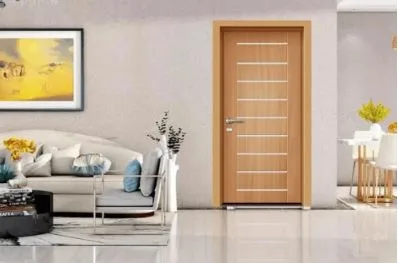How Innovative Materials Are Redefining Modern Interiors and Waterproofing Solutions?
In today’s construction environment, durability and design innovation have become paramount. Homeowners and builders are continually looking for solutions that blend beauty, durability, and enduring protection. Among these innovations, WPC doors and polymer cementitious waterproof coatings are gaining significant attention. While WPC doors represent a revolution in eco-friendly interior applications, polymer cementitious coatings are setting new benchmarks in structural protection.
Together, they highlight how technology and material science are shaping the future of sustainable living spaces.
The Rise of WPC Doors in Modern Construction:
Wood-Plastic Composite (WPC) doors have gained considerable popularity in residential and commercial construction projects because of their material composition and performance advantages. Weight: These kinds of doors are made from the mixture of wood fibers and thermoplastic polymers, a material that blends the look of wood with improved durability.
According to a 2024 market study, the global WPC doors market is projected to reach USD 4.2 billion by 2030, growing at a CAGR of 9.3%. The growth is largely driven by the growing need for moisture and termite-proof, low-maintenance alternatives to traditional wooden doors.
Unlike conventional wooden doors, WPC doors do not warp, swell, or crack when exposed to moisture. This quality makes them a good choice for places with high humidity levels, such as kitchens, bathrooms, and coastal properties. Customization options have also been broadened, with manufacturers providing options for buyers to pick from numerous choices of finishes, patterns, and textures that mimic the appearance of high-quality wood grains while providing greater durability.
Polymer Cementitious Waterproof Coating: A Game-Changer for Structural Protection
With the exponential increase in the development of infrastructure and residential projects, there has been a massive need for resilient waterproofing solutions. Polymer cementitious waterproof coating combines cement-based materials with polymer additives to deliver excellent water resistance, adhesion, and flexibility. This hybrid coating fills the gap between classic cement coatings and contemporary synthetic coatings.
Industry data states the global waterproofing market will exceed USD 75 billion by 2032 and polymer-based coatings will account for over 40% of usage. These coatings are extensively applied to roofing, basements, tunnels, water tanks and other concrete structures that need a long term waterproof coating.
The polymer component makes it flexible, and the material can withstand thermal expansion and contraction without cracking. Additionally, its excellent adhesion means a longer service life, less frequent repairs and maintenance are needed.
Integrating WPC Doors and Polymer Cementitious Waterproof Coatings in Residential Projects:
Modern architecture focuses on design that looks good and works well. Builders now adopt integrated solutions where WPC doors enhance interior spaces, and polymer cementitious waterproof coatings protect the underlying structures from moisture damage.
For example, in luxury apartment projects, WPC doors are installed in wet areas such as bathrooms and kitchens due to their resistance to warping and swelling. At the same time, polymeric cementitious coats are used under tile, and on concrete walls to stop water infiltration, thereby increasing the life of interior decorations.
This integration means cut down on long-term upkeep expenses and guarantees greater structural strength. According to builders, the act of combining these materials creates 30% less post-installation complaints than using standard doors and traditional waterproofing options.
Advancements in Material Technology and Design:
Both WPC doors and polymer cementitious waterproof coatings have benefitted significantly from technological innovation. Manufacturers now employ advanced extrusion techniques, automated coating systems, and environmentally friendly formulations to enhance performance.
For WPC Doors:
- Digital Texturing and CNC Precision: Enables exact replication of natural wood grains and customized panel designs.
- UV-Resistant Coatings: Protect doors from color fading due to sunlight exposure.
- Fire-Retardant Additives: Enhance safety in residential and commercial projects.
For Polymer Cementitious Coatings:
- Nano-Modified Polymers: Improve water repellency and resistance to chemical intrusion.
- Breathable Formulations: Allow trapped moisture to escape while blocking external water penetration.
- Eco-Friendly Additives: Reduce environmental impact while maintaining high performance.
These advancements align with the global shift toward sustainable construction materials, where performance is equally prioritized alongside environmental responsibility.
Market Trends and Regional Demand:
The Asia-Pacific region, particularly China and India, dominates the market for both WPC doors and polymer cementitious waterproof coatings. Rapid urbanization, government housing projects, and rising consumer awareness about durable materials are fueling demand.
- China: Accounts for over 35% of global WPC door production and is a leading manufacturer of advanced waterproofing coatings.
- Middle East & Africa: The extreme climatic conditions in these regions have accelerated the adoption of polymer-based waterproofing solutions.
- Europe & North America: Growing environmental regulations are driving the replacement of traditional wooden doors with sustainable WPC options.
According to a 2025 industry report, over 60% of new residential projects in urban centers now integrate WPC doors and polymer coatings as standard solutions.
The Future of Durable and Sustainable Construction:
With growing demand for low-maintenance, long-lasting materials, both WPC doors and polymer cementitious waterproof coatings are poised for significant expansion in the coming decade. As research goes on to improve material strength, design flexibility, and environmental performance, these new products are likely to become an invaluable tool to both the residential and commercial construction industry.
Future trends are toward the convergence of AI-based quality control, automated manufacturing systems and smart material monitoring technologies. These advancements will allow manufacturers to provide consistency, minimize waste, and offer products tailored to specific needs of certain geographical regions.
Conclusion:
In today’s construction world, durability, sustainability, and performance are at the forefront. WPC doors offer eco-friendly design flexibility for interiors, while polymer cementitious waterproof coatings provide long-lasting protection for structural elements. Together, they create an unstoppable combination that not only improves functionality but also adds a flair of style and confidence.
With an increasing demand for integrated solutions, architects, contractors, and homeowners are focusing on these innovations to drive change in contemporary construction standards. The future of sustainable living spaces is all about materials that are not only aesthetically pleasing but can also hold up to the test of time and the environment.


![Step-By-Step Guide to Claiming No Deposit Bonuses [2025 Update]](https://businesnewswire.com/wp-content/uploads/2025/09/jpeg-768x512.webp)
